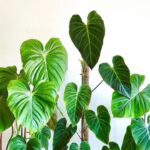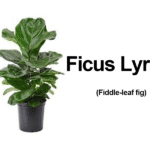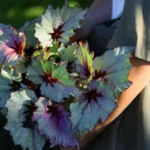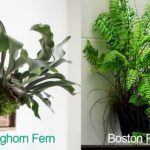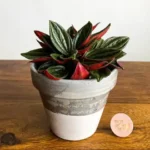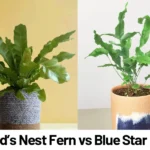Calathea White Fusion vs. Calathea Makoyana: A Practical Side-by-Side Plant Comparison
For fans of stunning indoor foliage, few genera inspire as much admiration as Calatheas. Known for their vibrant patterns and eye-catching leaf movements, they’re a go-to for stylish interiors. Two varieties—Calathea White Fusion and Calathea Makoyana—often top collectors’ wish lists. Their intricate variegation, similar care profiles, and botanical closeness frequently result in confusion, especially among beginner houseplant enthusiasts.
Despite these surface similarities, these two plants offer different visual impressions and practical considerations when it comes to size, light tolerance, and difficulty level. Whether you’re choosing your first statement plant or deciding which Calathea suits your lifestyle, this comparison will help you make a confident and informed decision.
Quick Comparison Table: Calathea White Fusion vs. Calathea Makoyana
| Feature | Calathea White Fusion | Calathea Makoyana |
|---|---|---|
| Botanical Name | Goeppertia lietzei ‘White Fusion’ | Goeppertia makoyana |
| Plant Family | Marantaceae | Marantaceae |
| Native Region | Tropical Asia (cultivar origin) | Brazil |
| Leaf Shape & Size | Oval, 4–8 inches long; green, white & lavender variegation | Rounded elliptical, 4–6 inches; dark green fishbone pattern on pale leaves |
| Growth Habit & Speed | Compact, slower growth; up to 12–18 inches tall | Moderate growth rate; up to 18–24 inches tall |
| Stem Structure or Identifiers | Purple-tinted stems; leaf undersides lavender-purple | Thin green stems; leaf undersides typically burgundy |
| Light Requirements (lux) | 500–2,500 lux (low to bright indirect) | 750–3,000 lux (medium to bright indirect) |
| Watering & Humidity Needs | Moist soil, 60–80% humidity | Moist soil, 50–70% humidity |
| Pet Safety / Toxicity | Non-toxic to pets (ASPCA-safe) | Non-toxic to pets (ASPCA-safe) |
| Price & Availability | Higher cost, less common (~$25–$50 USD) | Widely available, moderate price (~$15–$30 USD) |
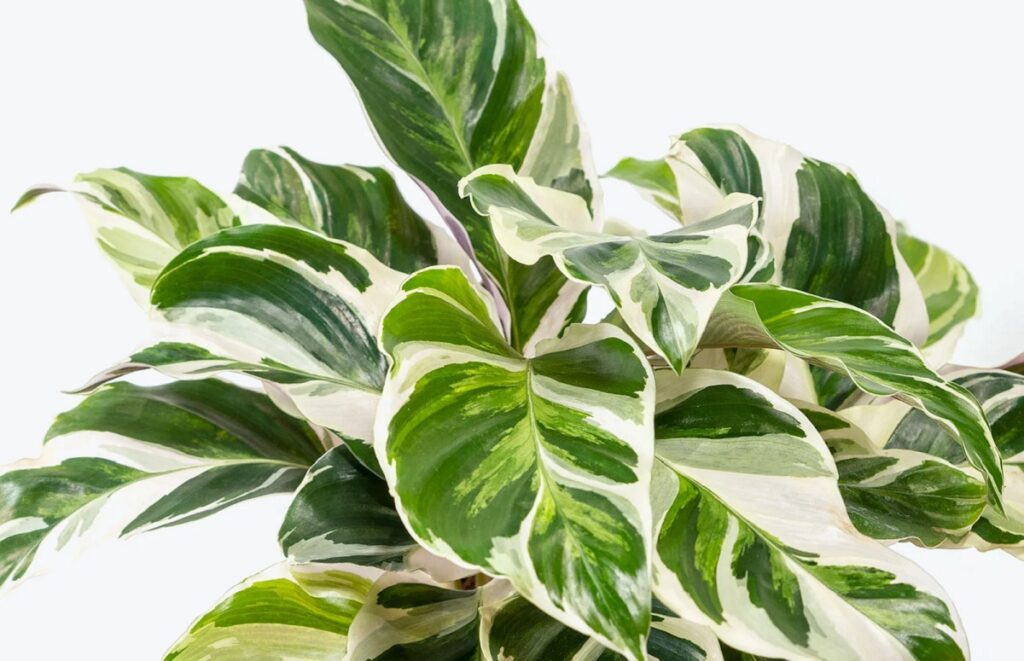
Exploring the Key Differences
Visual Identity & Foliage Design
The most striking difference between these two Calatheas lies in their foliage. The Calathea White Fusion is visually stunning with its variegated leaves—swirling bands of green, white, and creamy yellow, often lined by soft lavender undersides. It’s a designer statement ready for the spotlight. By contrast, the Calathea Makoyana, also known as the Peacock Plant, offers a more harmonized look with its signature dark green patterns resembling feathers or stained glass against a lighter green backdrop. Its colors are more consistent and softly elegant rather than highly contrasted.
If you’re seeking a showstopper or an eye-catching centerpiece, the White Fusion wins in sheer drama. However, if your décor leans toward botanical elegance with consistent color themes, Makoyana might be more your style.
Size, Space, and Growth Patterns
In terms of plant structure, the Makoyana is slightly taller and more open, making it ideal for shelf displays or corners needing vertical interest. It typically reaches up to 2 feet, while the White Fusion stays more compact at around 12–18 inches. This makes the White Fusion a strong candidate for desktops, side tables, or windowsills with limited vertical space.
The White Fusion tends to grow more slowly and compactly due to its variegation, which reduces chlorophyll and thus its photosynthetic power. Meanwhile, Makoyana is an easier and faster filler for spaces with its upright yet bushy habit.
Light Sensitivity and Care Difficulty
Though both species share similar preferences for bright, indirect light, the White Fusion is more light-sensitive. Too little light results in fading variegation, while too much direct light can lead to burn. It’s best grown in 1,000–2,000 lux environments—such as near east-facing windows or shaded southern exposure (Higaki et al., 1994). Makoyana tolerates slightly greater lux ranges (up to 3,000) and rebounds more readily from minor environmental inconsistencies.
Humidity is another big consideration. Although both plants thrive in high humidity, the White Fusion requires 60% or greater humidity to prevent crispy leaf edges, whereas Makoyana can manage with room humidity around 50% if watering is consistent and the air isn’t too dry (Jones, 2014).
Availability and Budget Considerations
The Calathea Makoyana is typically more accessible and affordable, often stocked in garden centers and large home stores. It’s an excellent entry point into the Calathea family. In contrast, the Calathea White Fusion is a more exclusive cultivar, often grown by specialty nurseries. Because variegated plants require more careful cultivation and grow slowly, they carry a higher price tag—frequently ranging from $25 to $50 for a small plant—double or triple that of a Makoyana of the same size.
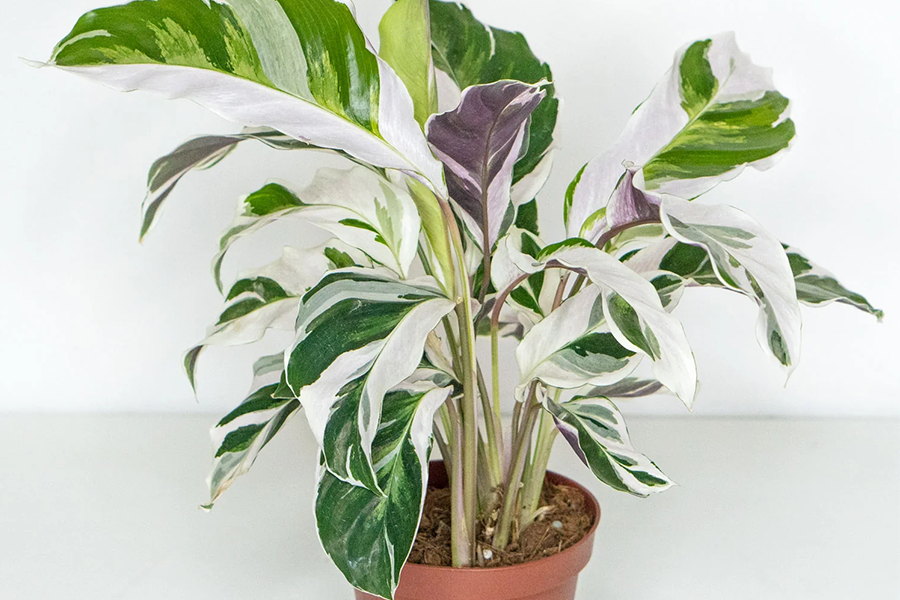
Which One Should You Choose?
- For Beginners: Choose Calathea Makoyana. It is more forgiving, more available, and hardier in varying humidity and light.
- For Small Apartments or Desks: White Fusion’s compact size makes it ideal for tight spaces—but watch your humidity!
- For Statement Décor: If your goal is to impress with bold contrast and unique coloration, the White Fusion offers unrivaled leaf variegation.
- For Pet-Friendly Homes: Both plants are non-toxic to cats and dogs, making either a safe option (ASPCA, 2024).
- For Low Light Conditions: While neither thrives in dim rooms, Makoyana adapts slightly better to medium-light areas.
Conclusion
Both the Calathea White Fusion and Calathea Makoyana bring tropical elegance into your indoor plantscape, but your lifestyle and aesthetic goals play a key role in deciding between them. If you crave stunning variegation and can offer consistent humidity and light conditions, the White Fusion makes for a dramatic and rewarding plant. However, if you prefer a slightly more forgiving, lower-maintenance companion without compromising on beauty, the Makoyana is an excellent choice.
Whatever your pick, both of these prayer plants respond to attentive care with quiet movements and vibrant leaves—reminding you daily of the joy living plants bring.
References
- American Society for the Prevention of Cruelty to Animals (ASPCA). (2024). Non-toxic Plants. Retrieved from https://www.aspca.org/pet-care/animal-poison-control/toxic-and-non-toxic-plants
- Higaki, T., Imamura, J. S., & Mason, R. (1994). Light levels for foliage plants (Research Bulletin No. 158). University of Hawaii at Manoa, College of Tropical Agriculture and Human Resources.
- Jones, H. G. (2014). Plants and microclimate: A quantitative approach to environmental plant physiology (3rd ed.). Cambridge University Press.


